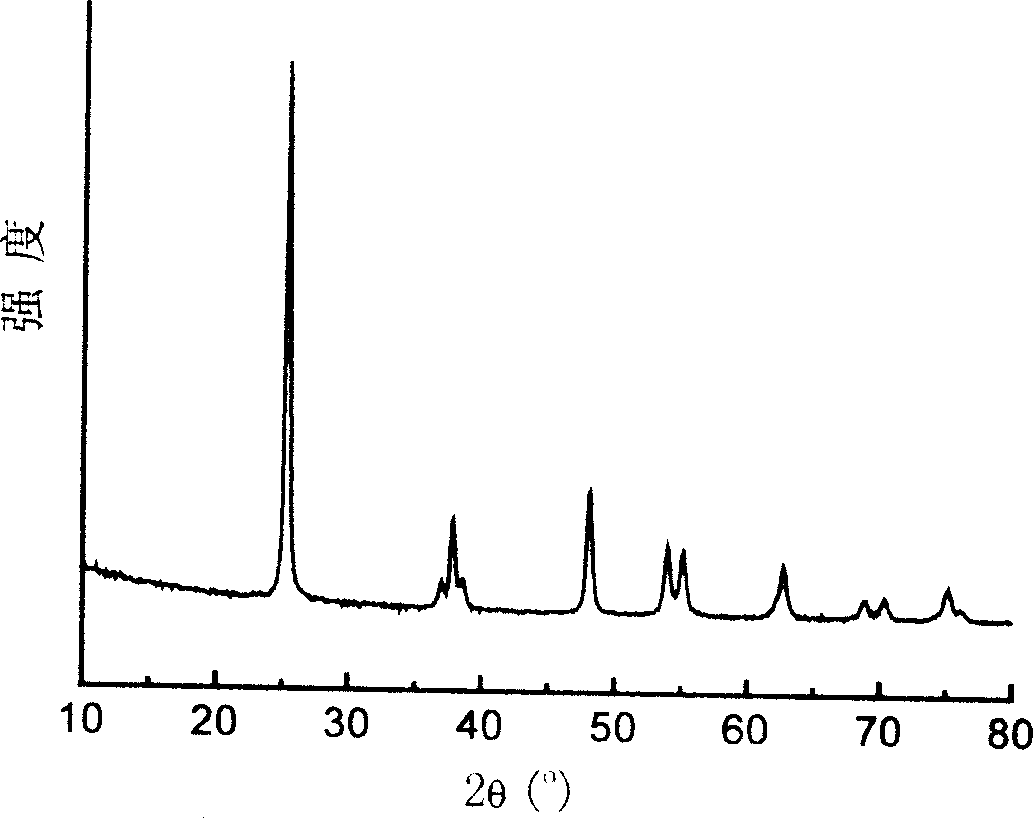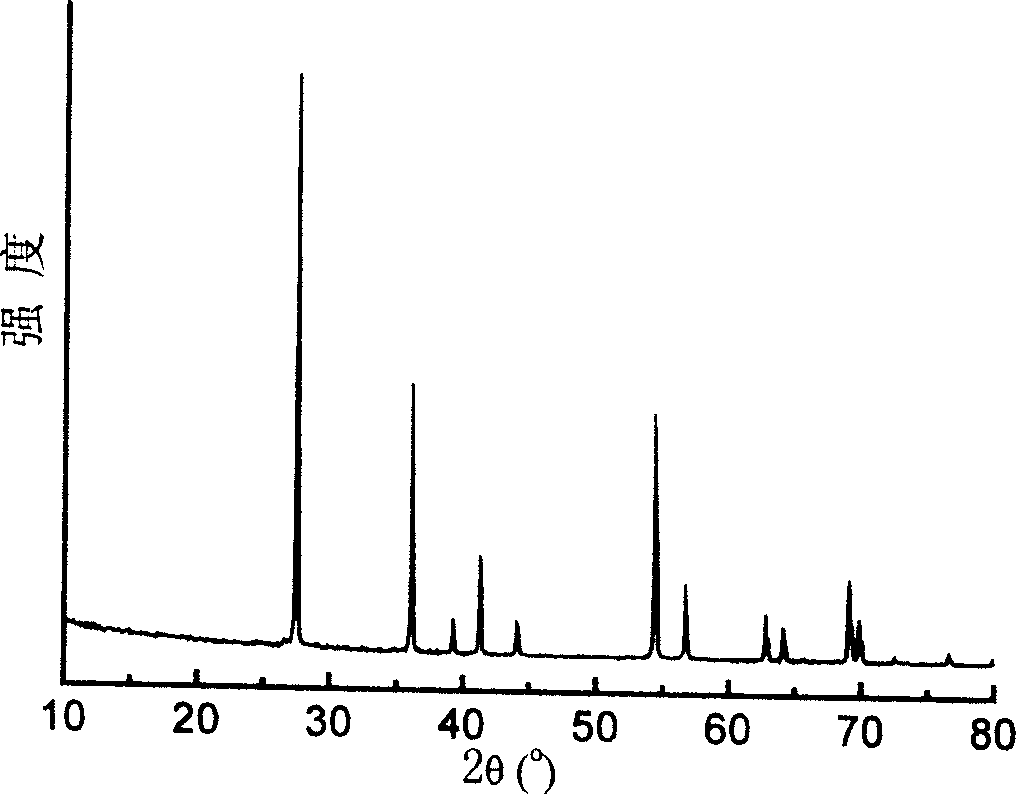Method for clean production of titanium dioxide by using sodium hydroxide
A sodium hydroxide and titanium dioxide technology, applied in the directions of titanium dioxide, titanium oxide/hydroxide, fibrous fillers, etc., can solve the problems of complicated steps and high production costs, and achieve the advantages of reducing reaction temperature, low cost and reducing production energy consumption. Effect
- Summary
- Abstract
- Description
- Claims
- Application Information
AI Technical Summary
Problems solved by technology
Method used
Image
Examples
Embodiment 1
[0027] The NaOH solution that is circulated back to the reactor and the high titanium slag (TiO 2 mass content is 87.0%) mixed under stirring, reacted at 500 ℃ for 0.5 hour, wherein, the mass ratio of NaOH and high titanium slag was 1: 1, obtained solid intermediate product after the reaction, at this moment, high titanium slag decomposition rate 100%. The intermediate product was washed twice with water at a washing temperature of 55°C, and the solid-to-liquid mass ratio of each washing was 1:20. The filtered product was added with sulfuric acid solution to adjust the pH value to 0.12. After it was completely dissolved at room temperature, iron powder was added as a reducing agent. Transform all ferric iron into ferrous iron. Finally, the obtained titanium solution was filtered, and the filtrate was hydrolyzed at 80°C for 8 hours, and the hydrolyzed product was filtered to obtain a white hydrated titanium dioxide solid, which was calcined at 650°C for 7 hours to obtain anata...
Embodiment 2
[0029] The NaOH solution that is circulated back to the reactor and the high titanium slag (TiO 2 The mass content is 91.0%), mixed evenly under stirring, and reacted at 450° C. for 5 hours, wherein the mass ratio of high titanium slag to NaOH solid was 2:1, and a solid intermediate product was obtained after the reaction, and the decomposition rate of high titanium slag was 99%. Wash the intermediate product with water at normal temperature, the washing solid-liquid mass ratio is 1:100, add hydrochloric acid solution to the product obtained after filtration to adjust the pH value to 0.25, fully dissolve at 60°C, filter out unreacted high-titanium slag, and then Sodium sulfite is added to the solution to reduce ferric iron to ferrous iron, and then the obtained titanium solution is filtered, the filtrate is hydrolyzed at 110°C for 4 hours, and the hydrolyzed product is filtered to obtain a white hydrated titanium dioxide solid, which is calcined at 950°C for 8 hours to obtain ...
Embodiment 3
[0031] The NaOH solution that is circulated back to the reactor and the high titanium slag (TiO2 The mass content is 90.5%), mixed evenly under stirring, and reacted at 350° C. for 2 hours, wherein the mass ratio of high titanium slag to NaOH solid was 3:1, and a solid intermediate product was obtained after the reaction, and the decomposition rate of high titanium slag was 100%. Add water and mix the solid intermediate product evenly, carry out the carbonation reaction of the intermediate product at 50°C, and pass CO into the solution 2 The partial pressure is 2MPa, the solid-liquid mass ratio of the reaction is 1:50, the product is filtered after 6 hours of reaction, and sulfuric acid solution is added to dissolve, and the pH value is adjusted to 0.25. After the product is dissolved at 35°C, iron sheet is added as a reducing agent to make All ferric iron is converted into ferrous iron, and then the obtained titanium solution is filtered, and the filtrate is hydrolyzed at 40°C...
PUM
 Login to View More
Login to View More Abstract
Description
Claims
Application Information
 Login to View More
Login to View More - R&D
- Intellectual Property
- Life Sciences
- Materials
- Tech Scout
- Unparalleled Data Quality
- Higher Quality Content
- 60% Fewer Hallucinations
Browse by: Latest US Patents, China's latest patents, Technical Efficacy Thesaurus, Application Domain, Technology Topic, Popular Technical Reports.
© 2025 PatSnap. All rights reserved.Legal|Privacy policy|Modern Slavery Act Transparency Statement|Sitemap|About US| Contact US: help@patsnap.com


